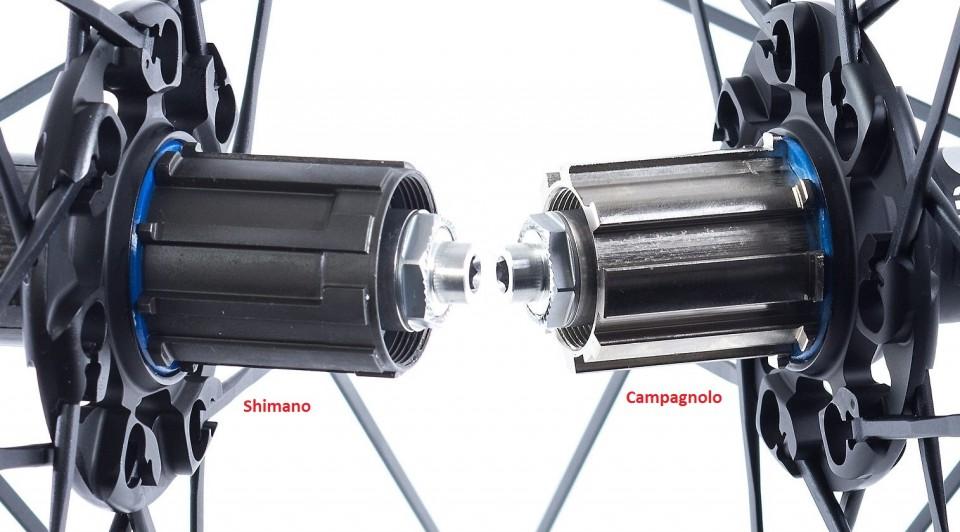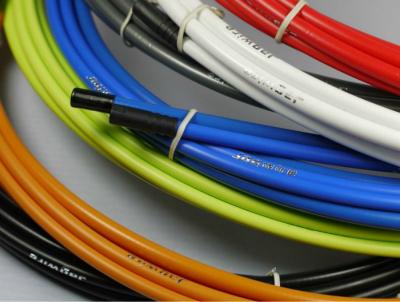How-To: Changing your Cassette
We've explained how to replace a Shimano/Sram/KMC and Campagnolo chain in previous posts. This blog is about changing your cassette, either when it’s worn out or if you need to swap it when you're heading into the mountains. Contents
- Cassette worn?
- Which cassette?
- Required tools
- How-to
1. CASSETTE WORN?
Just like with a worn chain, you can check the state of your cassette, though this is somewhat more difficult. The video below explains how to do this (2:41).
2. WHICH CASSETTE?
Will any old cassette fit? No. The type of body, the part of the rear hub to which you mount the cassette, determines which ones are compatible, and which aren’t. Shimano and Sram use the same fit and are therefore interchangeable. With bikes built from the early ‘00 and onwards, you can see whether the wheel uses a 9/10 speed body or a more modern 9/10/11 speed body. The Sram X1, X01 and XX1 mountain bike groupsets are unique in the sense that they require the specific Sram XD body. Campagnolo bodies are 9/10/11 speed and only work with a Campagnolo cassette. A Shimano or Sram cassette won’t work with these, just as a Campagnolo cassette won’t work with a Shimano/Sram body. The exception to this rule is the Edco Multisys body, which is compatible with both Shimano/Sram and Campagnolo.

When you’re looking for a new cassette, count both the number of cogs, as well as the amount of teeth on the smallest and largest ones. If you like the range of the cassette, get one with the same progression of gears. If you want or need a different range or progression of gears, for instance because you’re headed into the mountains, then you might want to consider getting a different cassette. A smaller cog means a heavier gearing, a larger cog means it gets lighter. An example: you have an 11-speed Shimano Ultegra 11-25 cassette. You might feel a little short on power during climbs, in which case you might want to consider an 11-28 or 11-32 cassette. Bear in mind that these have a different gear progression. As you can see, range and progression of gears are closely linked, so it pays to think carefully about what you want and need. An 11-32 cassette for instance, requires a derailleur with a long cage.
3. REQUIRED TOOLS
- Cassette whip
- Shimano/Sram or Campagnolo cassette remover
4. HOW-TO
We could do an extensive write-up on how to change your cassette, but it might be easier to just watch. Again, the credits go to the men of Global Cycling Network for making this video. A small note: if you’ve got an aluminium body, use some assembly paste before you fit the cassette. This reduces the chance of the cassette getting completely stuck, as cassettes tend to “bite” into the soft aluminium of the body. Was the previous cassette stuck, but you managed to get it off? Then file away any small nicks or pins from the grooves before you apply the assembly paste and fit the cassette. We’d recommend fitting a new chain as well. Not only will this run better, the chain can be shortened to the proper length too: fitting a smaller cassette is fine, as any chain can be shortened. Lengthening the chain however, which is required when fitting a larger cassette, is impossible.
Translated by - Bart van Es
Kees Neijenhuis
Enthusiastic trail runner and mountain biker. I love being outdoors! I also have a weak spot for beautiful products and true craftsmanship. Rides a Trek Top Fuel 9.7 SL 2018.
Related posts

How-To Convert 26" to 27,5" / 650b MTB wheel size
5 December 2017Want to convert your 26 inch MTB to a 27.6 inch? That's a job you can easily do yourself ...

Techcenter: Complete Groupset Assembly
4 June 2015You've just taken delivery of your brand new frame and groupset ...

How-To: Changing your Cables
17 April 2015If your groupset still feels “off” after having tuned your derailleurs and brakes, you'll probably need to replace your ...
 Nederland
Nederland België
België Deutschland
Deutschland United Kingdom
United Kingdom Finland
Finland Ireland
Ireland Luxembourg
Luxembourg Portugal
Portugal Poland
Poland Österreich
Österreich France
France España
España Italia
Italia Sverige
Sverige Danmark
Danmark









































































































































































































































